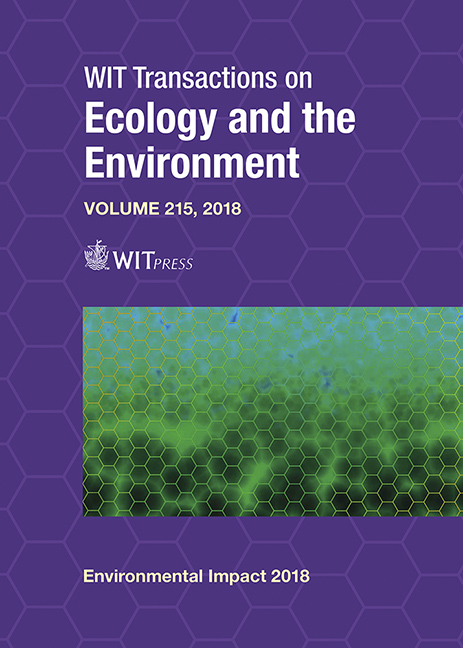THE IMPACT OF A CO2 REDUCTION TARGET ON THE PRIVATE CAR FLEET IN THE NETHERLANDS
Price
Free (open access)
Transaction
Volume
215
Pages
12
Page Range
109 - 120
Published
2018
Paper DOI
10.2495/EID180101
Copyright
WIT Press
Author(s)
JAAP VLEUGEL, FRANS BAL
Abstract
Climate change mitigation calls for a massive reduction in CO2-emissions from human sources. A primary human source is combustion of fossil fuels. Transport by road is one of the major and growing users of fossil fuels worldwide. Private cars with internal combustion engines dominate our roads. This paper discusses the feasibility of aligning CO2-emissions of private cars with the Paris Climate Agreement for 2030. It starts in 2010. Country of study is The Netherlands. The relation between climate change and air pollution is taken aboard. The following research questions will be addressed: How many private cars were there in The Netherlands, how many kilometres were driven and what were their CO2, NOx and PM10 emissions in 2010? What would these values be in the year 2030 assuming continuation of current trends in technology and policy? What could these values be if there were only full electric vehicles (FEV) on the road by 2030? Would behavioural change be necessary to reach the national CO2-reduction target for 2030? In the simulation model assumptions were used about car ownership and volume, electric cars, fuel efficiency and electricity mix. Car production could be limited to the most fuel-efficient and lowest emission electric cars. Buyers’ choice would become restricted. Fulfilling the Dutch CO2-emission reduction target for 2030 is only possible by using state-of-the-art technology in a fleet of 100% full electric cars (FEV) and a major reduction in yearly car kilometres (either per car or via fewer cars). This assumes a revolution in car production and sales and an active mobility reduction and modal shift policy. The first has just started, while the second and third are unlikely after decades of liberal policy-making, which has stimulated car mobility by expanding the road network, increasing maximum speeds and cutting public transport budgets.
Keywords
climate change, transport, technology, behaviour, car use, simulation, 2030





